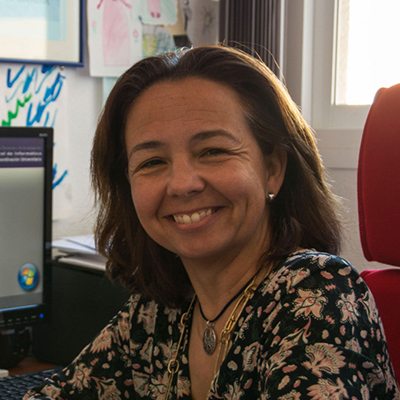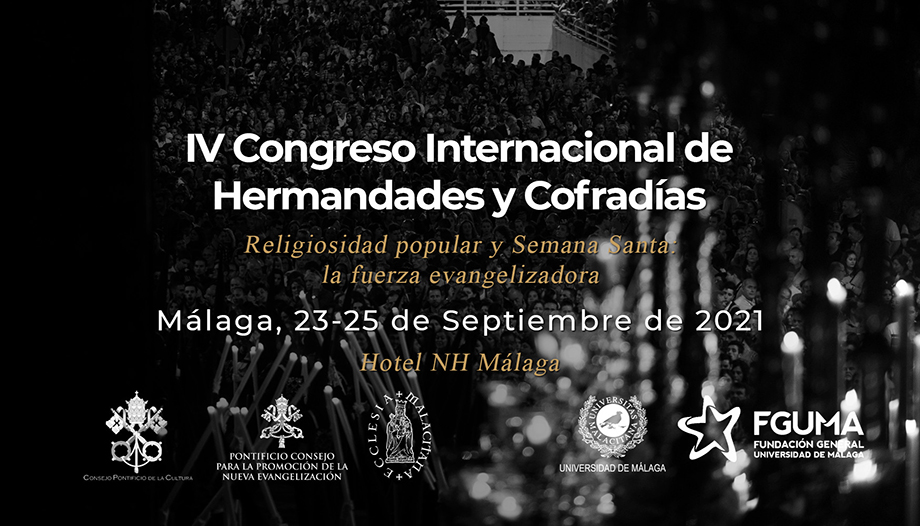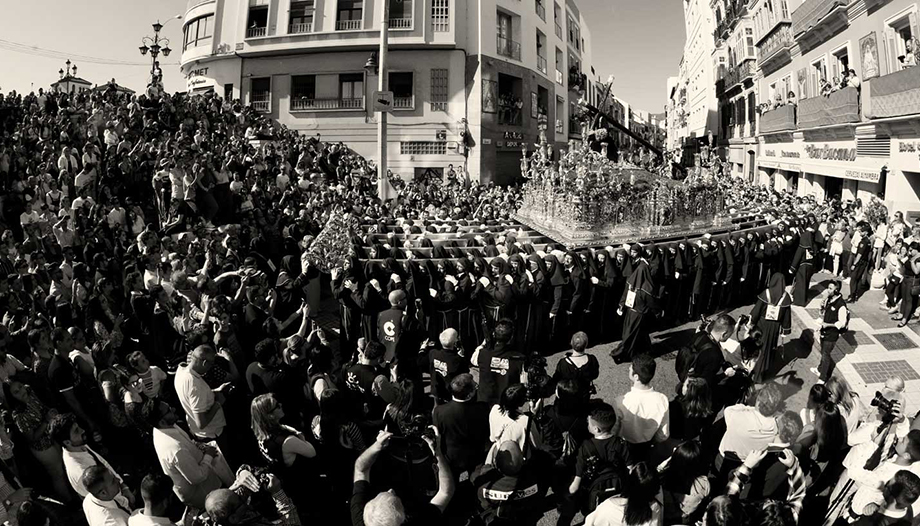The Spanish city of Malaga will host, next September, the IV International Congress of Brotherhoods and Sodalities. An event that will make the Andalusian capital the "epicenter of the debate and reflection on popular religiosity", as noted by Paloma Saborido, chair of the scientific committee of this congress a Omnes.
For this woman from Malaga, the International Congress that will take place in "her home" in a few months, is a privileged moment to "form us and give real information about the brotherhoods and sisterhoods to other movements of the Church. We want to show that we are not only aesthetic but that we know what we are doing; that we have our mission in the Church".
To talk to Paloma Saborido is to immerse oneself fully in the Thomistic Way of Beauty as a path to God, but how does a brotherhood member live the faith without falling into mere aestheticism?

-I have been a member of the brotherhood since I was born. Nazarene since I was three years old. I live my faith the way my parents taught me, by transmitting it through the brotherhoods and sisterhoods. And that is my faith, my Christian faith. I pray to some carvings, which I know are made of wood, but they serve me as an instrument to reach God. This is what most of the brotherhoods do".
One thing must be taken into account. The brotherhoods and sisterhoods put on the street a show that is not hidden to anyone. It is a spectacle of light, sounds, colors and aromas. It is impressive. And the better this spectacle is, within the rational limits that the present imposes on us, the better we will be able to carry out the mission we have. We are a means, the mission we have in our Church today is to evangelize: to show the passion of Christ and the message that Christ, through his passion, wants us to receive. That is our end, and we use this means and the Church uses this means.
I live my faith the way my parents taught me, by transmitting it through the confraternities and brotherhoods.
Paloma Saborido
We have to be very clear that the brotherhoods and fraternities have "many perspectives" as the anthropologist Isidoro Moreno says: the touristic, sociological, artistic, economic... and all of them are within the Holy Week, but the brotherhoods above all we are Christians. What we put in the street, for free, giving our family, our money, our effort... we do it only to transfer the message of Christ and we know it. Perhaps sometimes, as the aesthetics is deceiving, there is someone who has been able to remain in that. We know that we have to use that beauty as a means to reach God. There are those who approach the confraternities for the culture, for the art, for the music or because it gives them food, and they already approach, there is a second step and that is that what we offer is the message of Christ.
As you have pointed out, brotherhoods, brotherhoods of all kinds: of passion, of glory... use "beauty as a means to reach God". St. Thomas Aquinas defended it as a privileged means to reach the Truth, but don't you think that the danger of remaining in aesthetics is constant?
-The confraternities and brotherhoods have a mission. Rino Fisichella, whom I had the good fortune to listen to in Lugano (Switzerland) at the First Pan-European Forum of Confraternities, "you have the mission to evangelize in the Church, like priests, to evangelize in the street". For this we have an extremely beautiful means. If we show as best we can that Passion and Resurrection of Christ, that Easter message, the better we will achieve our goal.
In addition to that, especially this year, we have seen how far the work of the brotherhoods and fraternities have focused on what they had to do in this situation: help. Throughout Spain, towns and cities, the brotherhoods have turned to helping those most in need through Christmas campaigns, collection of back-to-school material, making gowns for the health workers, food collections... it has been impressive.
During the pandemic, the work of the brotherhoods and sisterhoods has focused on what they had to do in this situation: help.
Paloma Saborido
One fact is clear in our own country: in areas where there is a presence of brotherhoods and sisterhoods more than half of the children are baptized, there is a greater Christian life; but not so in areas where they do not have much presence, are they aware that they are "a dike to secularization" as some bishops have described them?
-The brotherhoods and confraternities are the movement of the Catholic Church, so to speak, with more possibilities of reaching more people. Simply because of their "plurinaturality" of culture, of art, of tourism, we reach more people than anyone else and that makes it possible for us to evangelize more people. We evangelize with our example, with our way of living, with what we preach from beginning to end, not only on the day of the procession. I remember an example that happened in my confraternity, the Pollinica from Malaga: we had a group of young people in which many young people participated: we had night adoration, we actively participated in the Mass... there were three brothers who came, but they never received communion... one day, the Elder Brother asked them about this and they told him that they were not baptized and asked to receive the sacraments of Christian Initiation because they wanted to be like that, like the confreres with whom they shared their time. This is the only reason why the effort and time you dedicate to this makes sense. Our existence as confreres makes sense so that these people come closer to God and the Church.
This happens all over the world. I recently came into contact with a confraternity in Mexico with similar experiences of approaching the faith. In this revolutionized society, hit by a pandemic that has caused so much suffering, the brotherhoods and confraternities have the ability to excite people and attract them to the faith of Christ and the Church.
Our existence as confreres makes sense so that these people can come closer to God and the Church.
Paloma Saborido
Focusing on the Congress to be held in Malaga next September, why was Malaga chosen for this meeting?
-The Grouping of Brotherhoods of Malaga offered, already in the III International Meeting of Brotherhoods, to host the next meeting framing it in the activities of celebration of its I Centenary, as it is the first grouping in the world.
The Association proposed me to be the scientific director. This was not new to me since, for some time now, we had been promoting the first University Course of Integral Formation in Management of Brotherhoods and Sisterhoods which is taught in a public university and of which we are already preparing the fourth edition, we have done summer courses, etc...
When designing the program We agreed that the debate had to be centered around popular religiosity, Holy Week as a movement in popular religiosity and in analyzing the evangelizing mission of the brotherhoods and confraternities, especially through the days of Holy Week.
How have you structured this objective at the Congress?
-The IV International Congress of Brotherhoods and Sisterhoods structures this reflection on popular religiosity in three panels united by the thread of the evangelizing mission of the brotherhoods and sisterhoods.
On the first day we will talk about popular religiosity as the foundation and basis of Holy Week. We will count with the inaugural conference of Monsignor Rino FisichellaThe presentation will focus on popular religiosity as a source of evangelization and then we will talk about this popular religiosity through speakers from both the anthropological and theological fields: how it is developing today, its sources...

The second day, the focus will be on the representation of the historical moment of the passion of Christ. That day we will have two axes: a panel discussion on the secondary characters of the passion, in which we will approach the evangelizing function of these characters, also the role of women in the passion of Christ, or how they have moved the role, the message of these secondary characters to the imagery ... In the second part we focus on the figure of Christ in his passion through three presentations: analyzing his judicial process, the physical suffering and the moment of the resurrection, through the latest research that has been carried out on the Shroud for which we will count with Paolo Di LazzaroDeputy Director of the Centro Internazionale di Studi sulla Sindone, Centro Internazionale di Studi sulla Sindone
On the third day, as it could not be otherwise, we will focus on the representation of popular religiosity. We will not only know the representations of the Levant, the Castilian, but also how this popular religiosity is represented in areas as different from ours as Central Europe or Italy, Mexico or Byzantine iconography.
Popular religiosity and especially the brotherhoods and confraternities are one of the strongest movements within the Catholic Church.
Paloma Saborido
I think it is an important Congress, not only because of the strength of the theme or the stature of the speakers among whom there are confreres but also those who are not at all, but because we want to have a deep debate on popular religiosity. Nowadays the popular religiosity and especially the brotherhoods and confraternities are one of the movements with more force inside the Catholic Church. We manifest that we are Christians in a clear and palpable way and that it moves many people and it is transcendental to give it the importance it has, as Pope Francis does.








